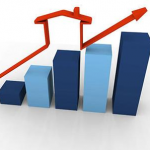 The U.S. economy depends on the consumer. This has been the case for nearly a century now, as post-WWII development in the country relied on a middle class nuclear family to purchase consumer goods that would build companies and profits. This system was extremely effective, and remains the predominant force in American trade.
The U.S. economy depends on the consumer. This has been the case for nearly a century now, as post-WWII development in the country relied on a middle class nuclear family to purchase consumer goods that would build companies and profits. This system was extremely effective, and remains the predominant force in American trade.
As a result, investors need to gauge consumer purchasing power both when considering how to allocate resources to sectors and to determine how much equity exposure is prudent. It is a risk factor and it is a leading indicator of which companies and sectors will outperform others. Thus it’s an important factor to keep an eye on.
But how to do it? There is the Consumer Sentiment Index and the Consumer Expenditure Survey, which are important tools in an analyst’s toolbox. There is more to look at, of course.
Consider the largest store of wealth for most middle class Americans: their homes. While stock and bond ownership has grown considerably, the middle class relies on rising home values and the opportunity to purchase a home as a means of investing. Therefore, looking at the state of the housing market may indicate how willing Americans will be to spend. Improving housing markets should make Americans feel richer, which in turn will make them spend more money.
How do we assess this? There are many data points, but here are the first to focus on:
- The Fannie Mae Monthly Summary – This tracks how many homes are in serious delinquency, or whose owners are so late on their mortgages that they are likely to default. This rate skyrocketed during the crisis in 2008 and has steadily fallen. This is a good indicator of the health of the overall market.
- The MBA Weekly Mortgage Applications Survey – This tracks how many people are applying for mortgages in a given week, which is an indicator of how many people are looking to refinance their homes or buy new homes. It is a good indicator of the health of the housing market in particular, but it is a noisy number.
- The National Home Asking Prices and Inventory – An informal collection of housing data based on data from the National Association of Realtors, but an extensive and useful one which is a leading indicator of households’ actual net worth in current market conditions. This number reflects the supply and demand trends of houses and how that impacts prices.
- The Bankrate Mortgage Rate – Bankrate collates a number of mortgage rates from different banks and shows how they are trending, which again reflects the affordability of houses as well as changes to Treasury rates, which impact mortgages.
- The S&P/Case-Shiller Home Price Indices – Similar to the NAR data, but arguably more objective (although with a bigger lag)
- The Zillow Home Market Index – Another rich data-set, arguably less comprehensive than the NAR or Case-Shiller data, but still of value.
So what do you do with these data sets? Track them, look for trends in rising or falling home values and sales figures. Compare that to other data sets on income, employment, consumer confidence, trade, and GDP growth, and you get a picture of how the American economy is changing, and whether it’s time to go heavy into or out of stocks, bonds, or specific sectors.
